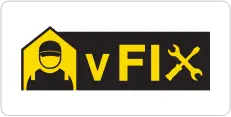What Construction Materials Keep The Houses Cool?

Thailand is very hot no matter what season it is. The first way that many people think of to cool down is to turn on the air conditioner with a fan to your heart's content, but you have to worry when the electricity bill comes each time. Well, the problem of the house being hot like it's in an oven will be gone. We just solve the problem directly by choosing heat-resistant construction materials such as roofs, ceilings, and heat insulation to suit your needs and weather conditions to prevent heat buildup inside the house from the construction stage. The important thing is that it helps to circulate the air inside to be ready to deal with high temperatures very well, making the house cooler and also saving energy.
Roof: The topmost layer of a house that is exposed to direct sunlight.

The roof is the first line of defense that prevents heat radiation from entering the home. Tips for choosing main roof tiles: Look at the materials used in production. Selecting main components that have low thermal conductivity and good heat release are considered an interesting option. Therefore, ceramic roofs are the answer if heat protection properties are the main concern because the texture of the tiles retains less heat and releases heat faster. Another interesting type is fiber cement roofs, which also have low thermal conductivity, but still less than ceramic tiles. But both can provide effective heat protection.
Ceiling: A helper to help keep your home cool that anyone can install.
Heat that is transmitted through the roof into the house. We can install a ceiling to help protect against heat transmitted from the roof tiles. Therefore, when choosing a ceiling, you should choose one that has low thermal conductivity, is strong and durable, is flexible, can withstand moisture well, and does not contain asbestos that is harmful to health. Ceilings that are installed outside are called "eaves ceilings" and ceilings that are installed inside are called "ceilings." Both have tips for choosing to buy to manage heat problems and to be suitable for the area of use. According to the information below

- Eaves ceiling: Most of the exterior ceilings are made of fiber cement, artificial wood, and smartboard because they are resistant to wetness well. And if you are considering the heat generated in the house, we recommend choosing a ceiling eaves that has ventilation grooves to dissipate heat and receive cool breezes all in one. Because the area of the roof hall is where heat accumulates if there is no heat dissipation. That heat will radiate back into the inside of the house. It makes the house hot and stuffy.
- Ceiling: Mostly, interior ceilings are made of fiber cement, smartboard, gypsum board, natural wood, or vinyl, depending on the room that will be used. No matter what type of material you choose, we recommend choosing a smooth one so that heat doesn't come inside the house.
Thermal Insulation: Another level of heat protection helper.
Heat from sunlight that hits the roof passes through the ceiling and is sent down inside the house. This makes our homes hot and stuffy and the air is not easily ventilated. Installing insulation is therefore an important help in reducing heat inside the home very well. The insulation is lightweight and contains many microscopic air bubbles. It has the ability to block heat in the air bubbles so it does not carry heat to other parts. Thermal insulation can be installed in both new and old homes and can be installed in many places. Whether it's on the ceiling, under the roof, or even inside the walls of the house. For buying techniques, we have some suggestions for you.

- K Value and R Value: When purchasing insulation, pay attention to these values in order to get effective insulation and excellent heat protection.
- K (Thermal Conductivity) is the value of thermal conductivity. "The lower the better" because normally hot air replaces cold air. If the material has a low thermal conductivity, less heat will enter the house. Therefore, a lower K value will show that the insulation can protect against heat well. The unit is W/mK.
- R (Thermal Resistance) is the value of thermal resistance. "The higher the better" because this value will indicate how much the insulation can inhibit heat transfer. It has the unit m2K/W. The number of this value also depends on the thickness and K value of the insulation.
- The formula for calculating thermal resistance is R = thickness of object / thermal conductivity (K).
- K (Thermal Conductivity) is the value of thermal conductivity. "The lower the better" because normally hot air replaces cold air. If the material has a low thermal conductivity, less heat will enter the house. Therefore, a lower K value will show that the insulation can protect against heat well. The unit is W/mK.

- Choose the type of insulation that is appropriate for the installation area: There are 5 main types of insulation in general:
- Aluminum foil: It is a sheet of aluminum foil on both sides. It is thin, smooth and tough. Highly reflective of heat, easy to find, cheap, resistant to humidity well. But it doesn't help much in preventing heat from entering the house. It is usually installed in the area of the roof frame and must be used in conjunction with other types of insulation.
- Cellulose fiber: This is an insulation that comes from recycled materials by shredding used wood pulp or paper pulp and bonding it together with borax. Good heat protection but not very resistant to water and humidity and has a chance of catching fire.
- Polyurethane or PU Foam: It is characterized by air pockets with many cavities. Therefore, it can be attached to the roof underlayment very well. Suitable for industrial plants that have cooling problems.
- Fiberglass: It is a compressed fiber covered with aluminum foil. It is a structure that is not solid. It greatly reduces the amount of heat that will pass into the building. The foil prevents heat from escaping inside the insulation and helps block sound well. Light weight, suitable for installing roof purlins. But it is not suitable for use in open areas.
- Calcium silicate: It is porous and comes in both mineral and synthetic fibers. Resists heat well, can be painted over, is quite fire resistant, commonly used to cover pipes and containers in industrial processes.
- Aluminum foil: It is a sheet of aluminum foil on both sides. It is thin, smooth and tough. Highly reflective of heat, easy to find, cheap, resistant to humidity well. But it doesn't help much in preventing heat from entering the house. It is usually installed in the area of the roof frame and must be used in conjunction with other types of insulation.
- If installing inside the house: We recommend choosing a type of insulation made from fiberglass. Because it does not spread fire, is not harmful to health and is environmentally friendly.
Shop for roofing, ceiling, and insulation products online 24 hours a day with Thai Watsadu.
Experience shopping for home products online today with Thai Watsadu, the home product center for Thai people. Distributor of roofs, eaves, and heat insulation. Various types of construction materials Answer every need. Easy to order, convenient and fast. Choose to receive products at the branch yourself. or choose to receive the product at home Nationwide delivery service Order online at thaiwatsadu.com Or contact via Chat & Shop LINE @thaiwatsadu Tel. 1308












